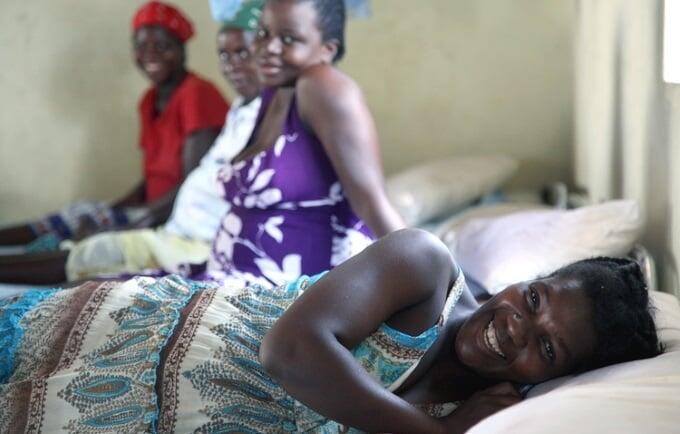LUPANE, Zimbabwe – Sithembiso Ncube, a 30-year old mother of three who is pregnant with her fourth child, smiles broadly because she knows she is lucky. She lives in Mtshakabandana, a remote village 52 kilometres away from the nearest health facility in Lupane, Matabeleland North.
Sithembiso is staying at the Maternity Waiting Home at St. Luke’s Mission Hospital, awaiting her time to give birth. The home is vastly different to her first experience of it nine years ago.
“When I came here for my first pregnancy the situation in the waiting home was dreadful,” she says. Now, however, she is delighted because of substantial changes made to the hospital’s Maternity Waiting Home, thanks to the European Union-supported Revitalizing Maternity Waiting Homes and Related Services Project.
Improving maternal health
This three-year project, in partnership with UNFPA and the Ministry of Health and Child Care, aims to improve maternal health and access to maternal and infant health services through the refurbishment of Maternity Waiting Homes across the country.
Sithembiso describes the difference between her experiences at St. Luke’s Hospital now compared to her first visit in 2006 as ‘worlds apart’. “It was overcrowded and some of the amenities that we have here today did not exist then,” she says.
St. Luke’s Mission Hospital originally had a carrying capacity of 29 pregnant women against an average of 194 admissions in their waiting home. Due to high demand, the maternity waiting home had mattresses on the floor instead of beds, to create more space for the sheer volume of pregnant women.
"They were sleeping in the open"
This also resulted in some pregnant women sleeping out in the open, even during harsh weather conditions. “During the rainy season the situation became dire,” says Sithembiso.
However, with support from the project, conditions at the waiting home have improved drastically. Its bed-carrying capacity has increased to 160 due to the refurbishment of the sleeping rooms, while two new sleeping blocks and ablution blocks have been built. The kitchen and washing facilities have also been renovated.
The waiting home now has 100 hospital beds and 50 mattresses, as well as wheelchairs, stretchers, blankets, pillows, mosquito nets, Dover stoves and a television. It also receives nutritional support, thanks to a partnership with the World Food Programme.
“Today I’m here to deliver my fourth child. We are grateful that as pregnant women, we have a waiting home which addresses challenges like transport,” says Sithembiso.
Donation of ambulances to transfer pregnant women
One of the major causes of maternal deaths in Zimbabwe is the delay in reaching a health facility and lack of skilled attendance at birth. In remote parts of Zimbabwe, the situation is far more pronounced due to a lack of transport but this has changed following a donation of ambulances by the European Union under the project.
All-terrain ambulances were distributed to rural district and mission hospitals to strengthen referral systems. The EU-funded project has donated a total of 63 ambulances nationwide to service local communities, and to transport expectant mothers like Sithembiso from their remote villages to maternity waiting homes.
Since the refurbishment of St. Luke’s Hospital Maternity Waiting Home, the district of Lupane has recorded 1864 deliveries, of which 1609 were institutional deliveries. In the same period, the district recorded only three maternal deaths.
By Victoria Walshe



